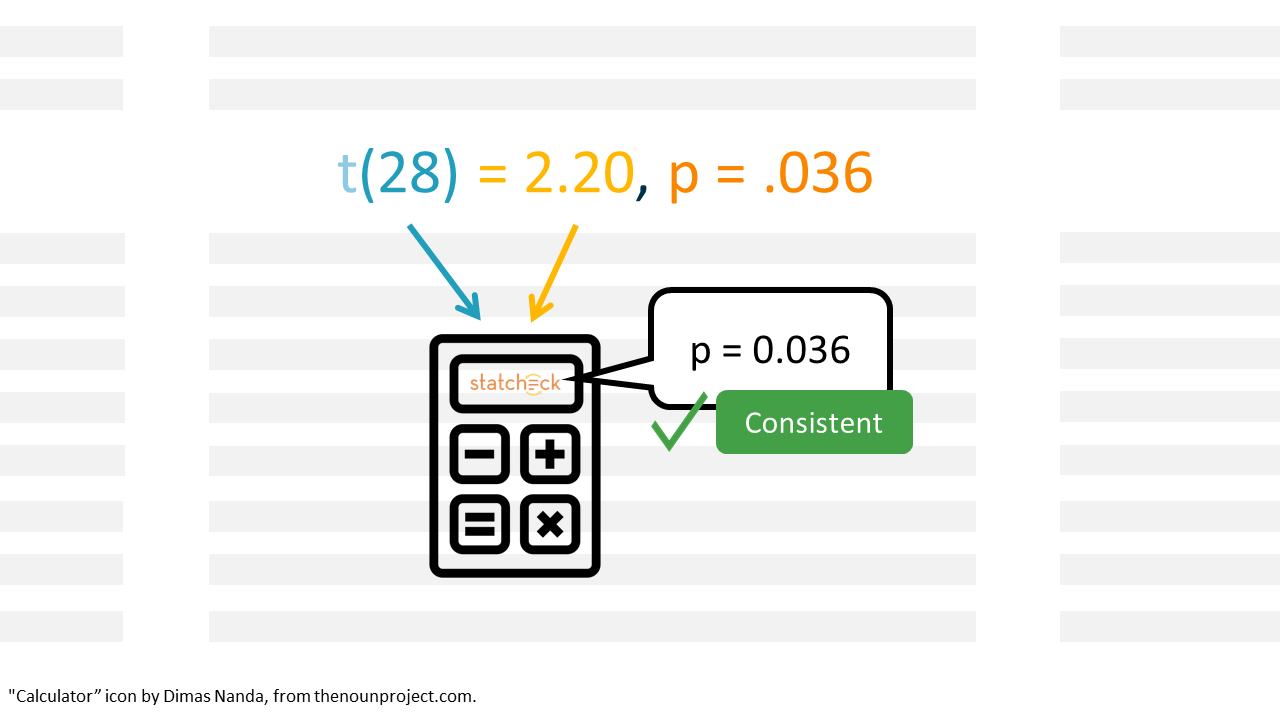

statcheck is a “spellchecker” for statistics. It checks
whether your p-values match their accompanying test statistic
and degrees of freedom.
statcheck searches for null-hypothesis significance test
(NHST) in APA style (e.g., t(28) = 2.2, p < .05).
It recalculates the p-value using the reported test statistic and
degrees of freedom. If the reported and computed p-values don’t match,
statcheck will flag the result as an error.

statcheck is mainly useful for:
statcheck to
make sure your manuscript doesn’t contain copy-paste errors or other
inconsistencies before you submit it to a journal.statcheck to check submitted manuscripts for statistical
inconsistencies. They can ask authors for a correction or clarification
before publishing a manuscript.statcheck can be used to
automatically extract statistical test results from articles that can
then be analyzed. You can for instance investigate whether you can
predict statistical inconsistencies (see e.g., Nuijten et al., 2017),
or use it to analyze p-value distributions (see e.g., Hartgerink et al.,
2016).The algorithm behind statcheck consists of four basic
steps:
statcheck can recognize t-tests,
F-tests, correlations, z-tests, \(\chi^2\) -tests, and Q-tests (from
meta-analyses) if they are reported completely (test statistic, degrees
of freedom, and p-value) and in APA style.Error in the output). If the reported p-value is
significant and the computed is not, or vice versa, the result is marked
as a gross inconsistency (DecisionError in the
output).statcheck takes into account correct rounding of the
test statistic, and has the option to take into account one-tailed
testing. See the manual for
details.
For detailed information about installing and using
statcheck, see the manual on
RPubs.
statcheck.io is a web-based interface for statcheck.